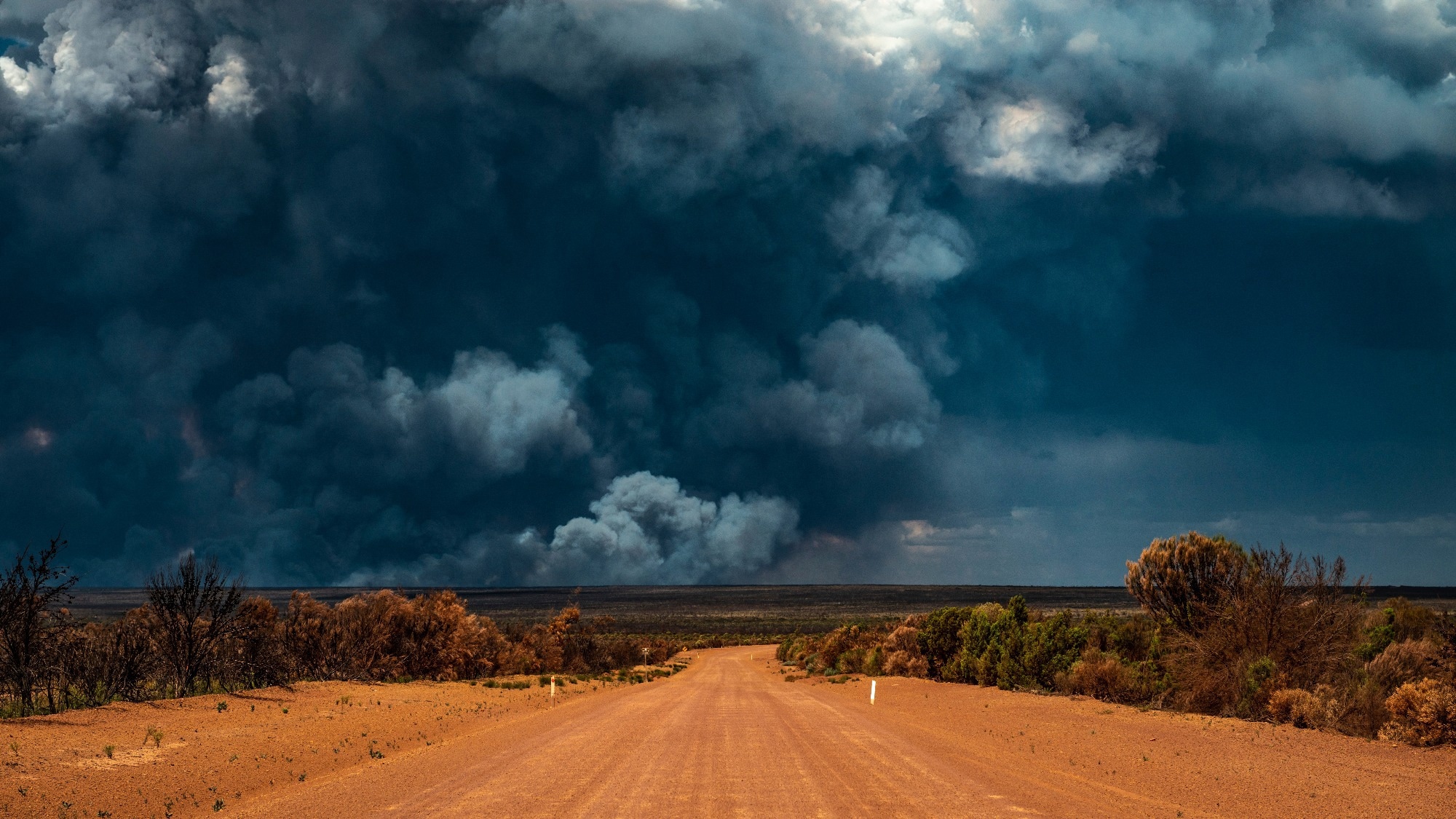Scientists warn that surging fire-related PM2.5 is eroding progress in clean air and fueling a growing global health burden.

Global health burden from acute exposure to fine particles emitted by fires. Image Credit: josh.tagi / Shutterstock
A recent study published in the journal npj Clean Air assessed global population exposure and health burden from fine particulate matter (PM2.5) related to fires.
Landscape fires, including wildfires and controlled/prescribed burns, occur in vegetated areas like grasslands, agricultural lands, and forests. Most wildfires are ignited by humans, which have become more frequent due to climate change driven by drier conditions and higher temperatures. Larger wildfires burn for prolonged periods, fueled by conducive weather conditions.
Like wildfires, other forms of fire release air pollutants, such as PM2.5, volatile organic compounds, and toxic gases. Acute exposure to fire emissions poses an immediate and significant threat to human health. Inhaling wildfire smoke and other pollutants can lead to diverse health issues, including respiratory, mental health, and cardiovascular problems.
The study and findings
In the present study, researchers at the CICERO Center for International Climate Research in Oslo, Norway, and the Finnish Meteorological Institute in Helsinki, Finland, examined global population exposure to fire-related PM2.5 and the health burden associated with cardiovascular, respiratory, and all-cause deaths.
They used a global chemical transport model, the System for Integrated Modeling of Atmospheric Composition (SILAM), to assess long-term trends in population exposure to fire PM2.5 between 1990 and 2018.
The population-weighted exposure to all-source PM2.5 decreased in high-income regions of North America and Europe, but continued to increase in developing regions of South Asia and West Africa.
In contrast, population-weighted exposure to fire PM2.5 showed a rapid increase in high-income North America and Central and Eastern Europe, increasing at over 0.02 μg/m3 per year in the boreal summer months, and at a slower rate in other months.
Fire PM2.5 significantly increased in sub-Saharan Africa and in Andean and Tropical Latin America during the boreal summer, and increased markedly in Central sub-Saharan Africa during the boreal winter months. The 95th percentile exposure (identified as an extreme level of exposure) to fire PM2.5 and all-source PM2.5 increased by 0.02 μg/m3 and 0.92 μg/m3 per year, respectively.
Further, the global increases in extreme levels of all-source PM2.5 were driven by significant increases in their extreme levels in sub-Saharan Africa and South Asia. In contrast, most global regions exhibited substantial increases in the extremes of fire PM2.5.
On average, global fire PM2.5 exposure exceeded the extreme levels of 1990-94 (EXdays) for 16, 45.8, and 66.1 days during the periods 1990-99, 2000-09, and 2010-18, respectively.
Over half of the global population (53%) experienced “minimum perpetual fire occurrence” (≥1% fire-PM2.5 in total PM2.5 for 50 instances of 3 consecutive days per year) in 2010,2018, while 3.2% (about 228 million people) faced “substantial perpetual fire occurrence” (≥30% fire-PM2.5), predominantly in sub-Saharan Africa and Latin America.
Mali, Brazil, the Democratic Republic of the Congo, Bolivia, Russia, and Georgia showed the largest increases in EXdays by 39, 37, 32.5, 30, 25.4, and 20.3 days, respectively, between 1990-1999 and 2010-2018.
The contribution of fires to all-source PM2.5 increased over time in most of Europe, South America, and North America, and decreased in sub-Saharan Africa. The reduction in sub-Saharan Africa was attributed to an increase in emissions from other sources.
Next, the team used multi-city, multi-country health datasets to derive relative risk functions for fire PM2.5 exposure. The risk estimates were used to compute the annual excess deaths from acute exposure to fire PM2.5 from 1990 to 2018. The highest burden of all-cause deaths from exposure to fire PM2.5 occurred in 2010, with about 120,000 deaths, mainly attributable to extreme fire events in Eastern Europe.
An average of about 69,000 deaths was estimated from acute fire exposure in 1990-99, which increased to around 89,000 in 2000-09 and about 99,000 in 2010-18.
Excess deaths from respiratory and cardiovascular diseases attributable to fire PM2.5 increased from roughly 7,000 and 17,000 in 1990-99 to around 9,000 and 30,000 in 2010-18, respectively. These estimates had wide uncertainty intervals, spanning roughly half to one and a half times the central values.
For cardiovascular mortality, the authors noted that wide regional uncertainty intervals, especially in Central/North America and Central Europe, reflect inconclusive epidemiological associations. A large proportion of all-cause mortality from fire PM2.5 occurred in Eastern Europe and sub-Saharan Africa.
Europe, particularly Eastern Europe, had the largest burden of cardiovascular deaths attributable to fire PM2.5, followed by North Africa and the Middle East, a pattern partly explained by higher regional relative risks applied in the analysis. While associations with all-cause and respiratory mortality are consistently positive, evidence for cardiovascular outcomes is mixed, so these estimates should be interpreted with caution.
East Asia, sub-Saharan Africa, and South Asia showed the largest burden of respiratory deaths. During 1990-99, 35% of respiratory deaths and 27% of all-cause deaths from fire PM2.5 occurred in children under five years of age. Cardiovascular deaths due to fire PM2.5 mainly occurred in people over 60 years old.
Despite rising exposure and more frequent extremes, the global crude death rate for all-cause mortality declined slightly from 14.1 per million in 2000,09 to 14.0 in 2010,18, reflecting falling baseline mortality rates.
Conclusions
While all-source PM2.5 exposure decreased worldwide from 1990 to 2018, fire PM2.5 increased in all vegetated continents. Extreme levels of fire PM2.5 have significantly increased in most vegetated continents, with the mean number of EXdays tripling from 1990 to 2018 relative to 1990-99.
The researchers note that their estimates are more conservative than some previous global assessments, partly because they focused solely on acute (short-term) exposure and used different fire emissions datasets.
They recommend interpreting their findings as relative changes from 1990 to 2018. Growing contributions of fire to ambient PM2.5 and related health burdens counteract clean air policies worldwide. If fire emissions are more toxic than those from other sources, more sustainable forest management will be vital to alleviate exposure and health burdens.